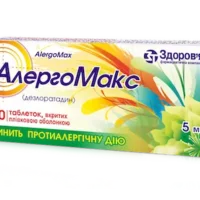Description
Rolinoz (Cetirizine) Oral Drops Solution 10 mg/ml – 20 ml Vial
Ingredients
- Active ingredient: Cetirizine 10 mg/ml
- Other ingredients: Glycerol, Propylene glycol, Purified water
Dosage
For Adults and Children over 6 years: Take 10 drops (10 mg) once daily or as directed by a healthcare professional.
Indications
Rolinoz oral drops are indicated for the relief of symptoms associated with allergic rhinitis (hay fever) and chronic idiopathic urticaria in adults and children.
Contraindications
Do not use Rolinoz oral drops if you are allergic to cetirizine or any of the other ingredients in the product.
Directions
- Shake well before use.
- Use the provided dropper to measure the correct dose.
- Administer the drops orally. Do not exceed the recommended dosage.
Scientific Evidence
Cetirizine, the active ingredient in Rolinoz oral drops, is a second-generation antihistamine that is highly effective in the treatment of allergic conditions. Studies have shown that cetirizine is well-tolerated and provides rapid relief from symptoms such as sneezing, itching, and nasal congestion. Research published in the Journal of Allergy and Clinical Immunology has demonstrated the efficacy of cetirizine in improving quality of life for patients with allergic rhinitis.
Additional Information
It is important to note that cetirizine may cause drowsiness in some individuals. Avoid driving or operating heavy machinery until you know how this medication affects you. If you are pregnant or breastfeeding, consult your doctor before using Rolinoz oral drops.
Pharmacological Action
Cetirizine works by selectively antagonizing the histamine H1 receptors, thereby preventing the action of histamine. This action helps in reducing allergic symptoms by blocking the effects of histamine in the body.
Comparison with Alternatives
Cetirizine has been compared to other antihistamines like loratadine and fexofenadine in various studies, with findings suggesting similar efficacy in symptom relief. However, individual responses to different antihistamines may vary, and it is essential to consult a healthcare provider to determine the most suitable treatment option.





